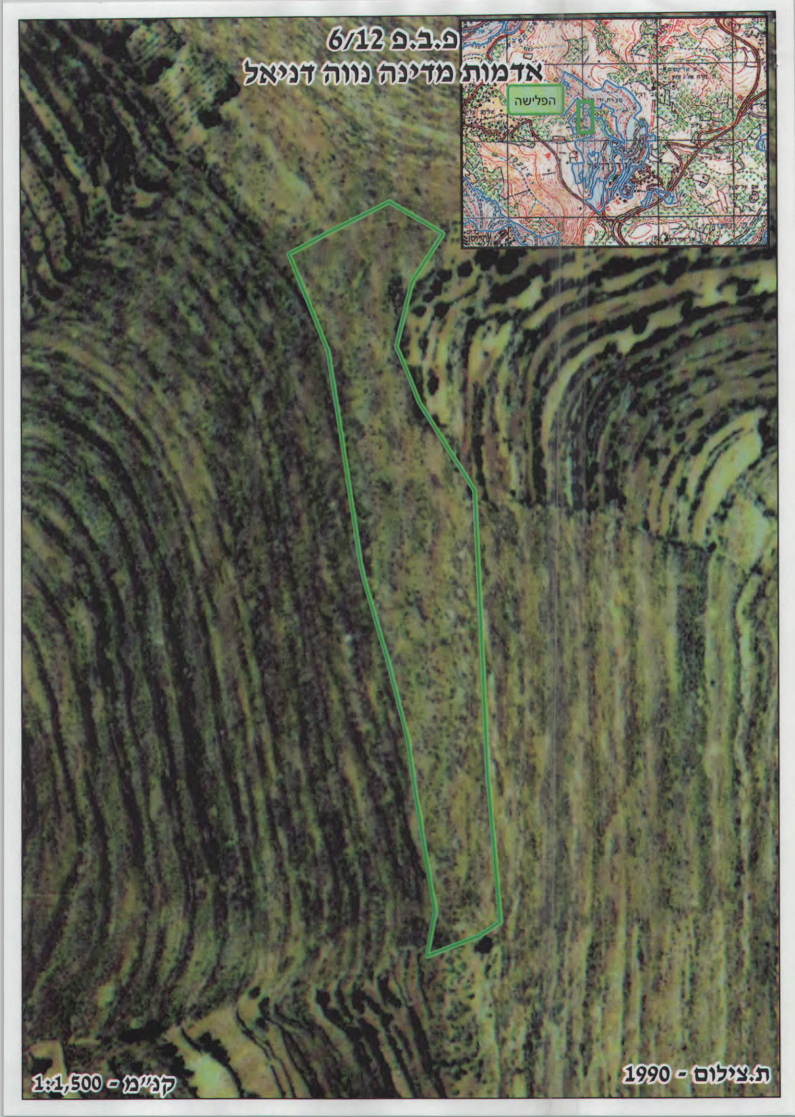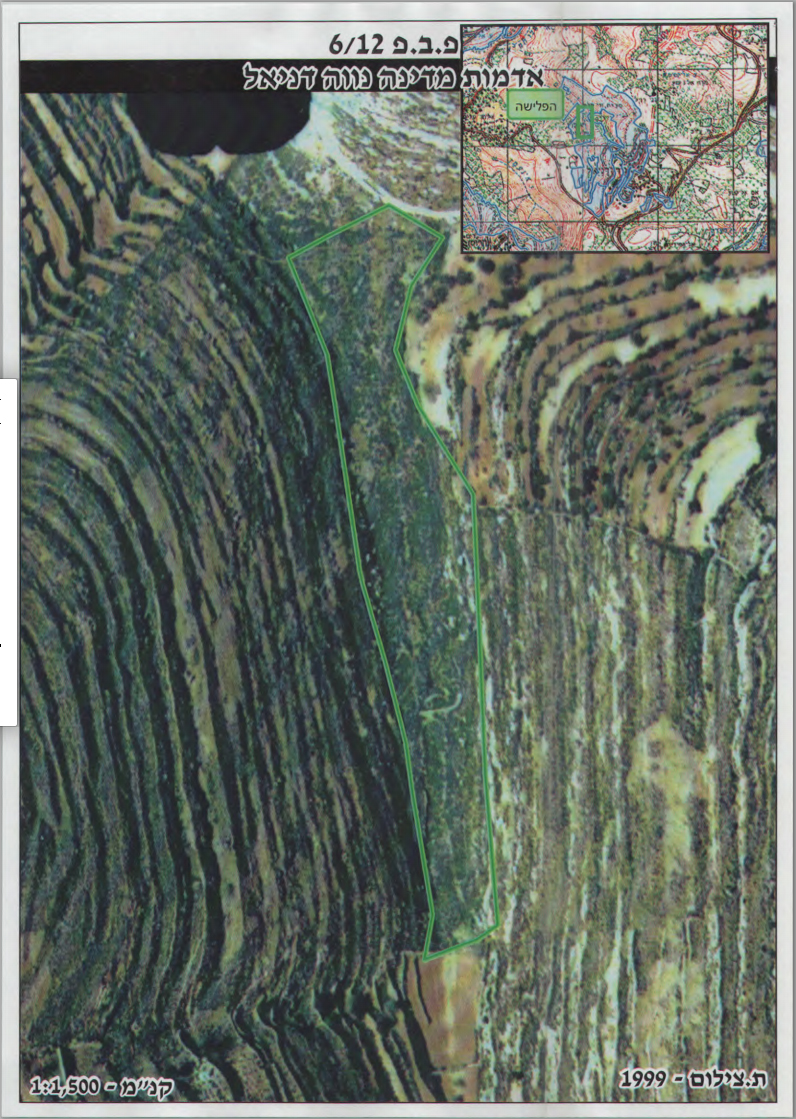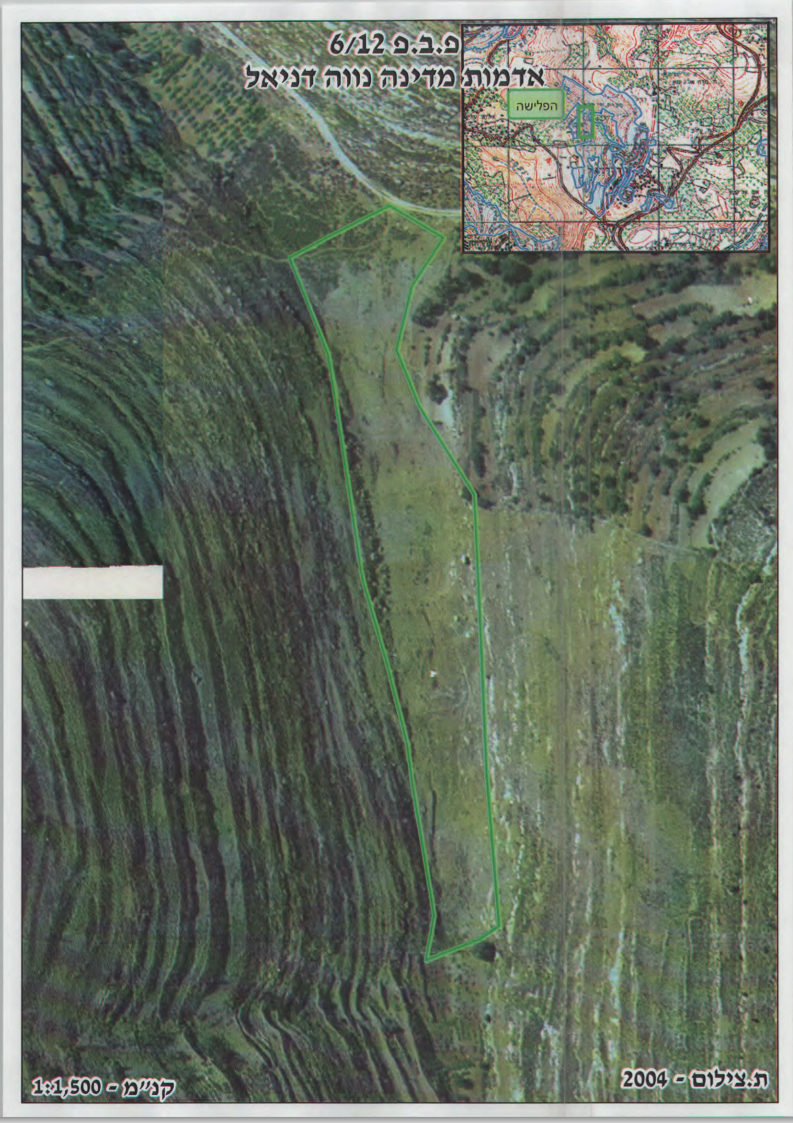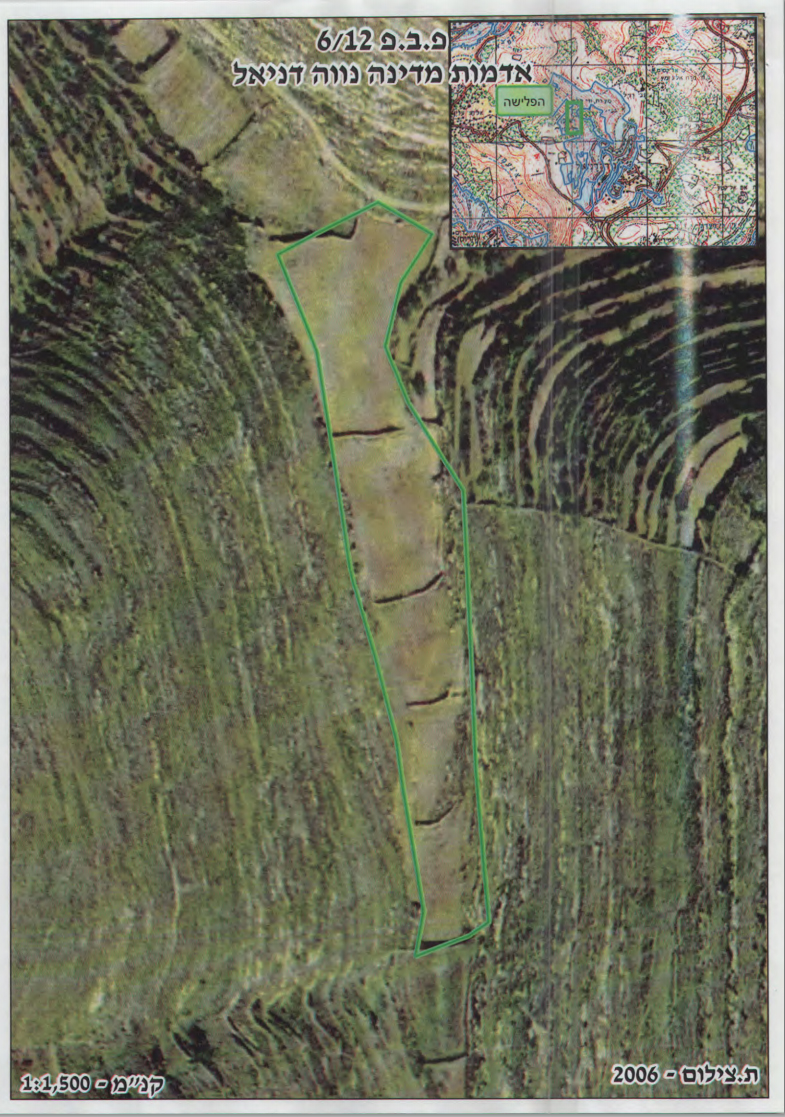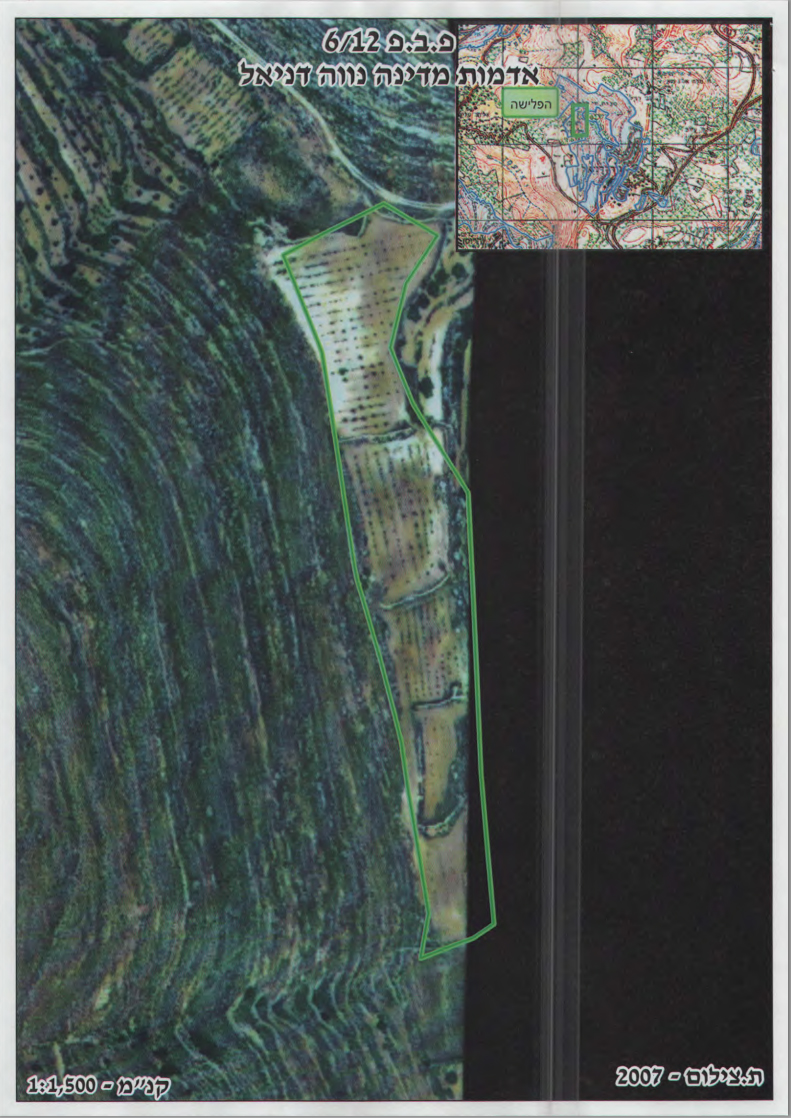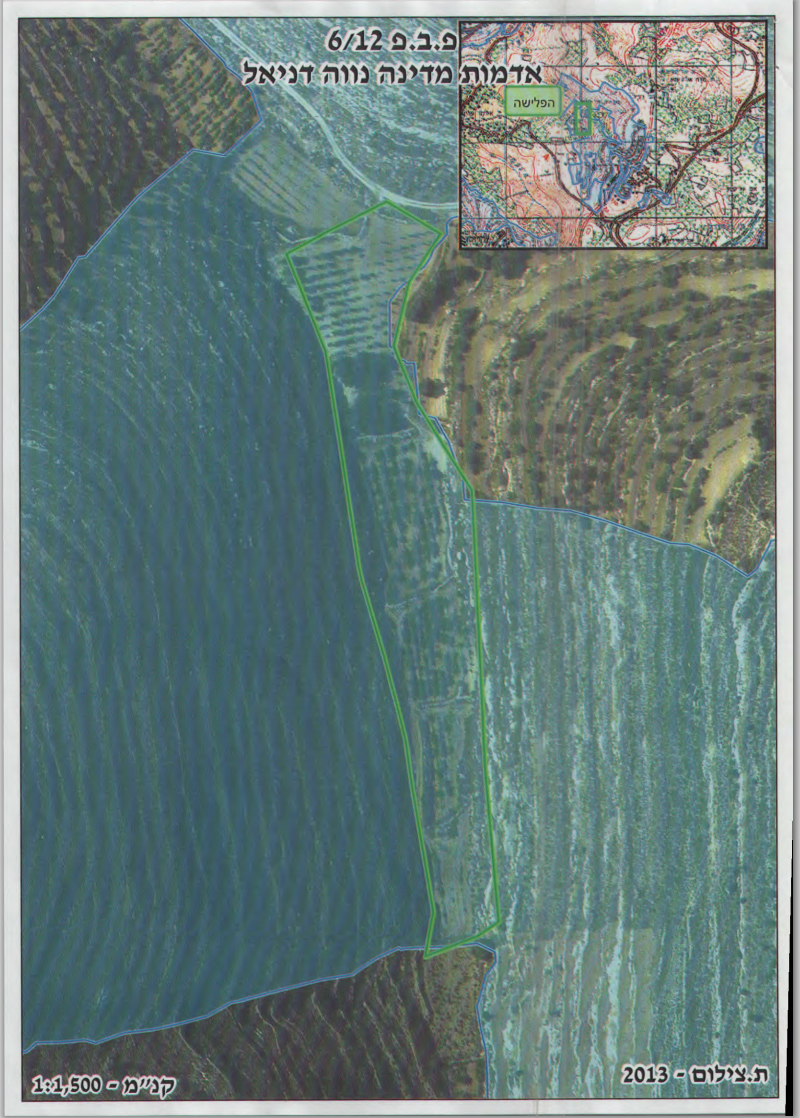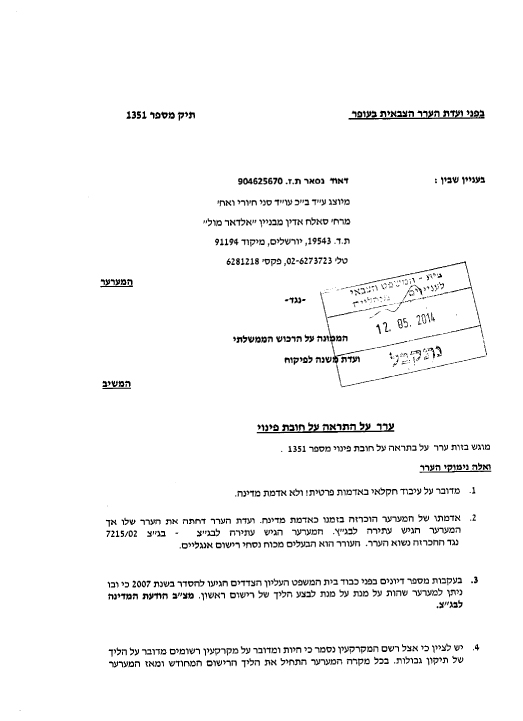Daoud Nassar, who was touring the U.S. when the trees were uprooted, gave a hastily organized conference call sponsored by Churches for Middle East Peace the day after the Israelis uprooted the trees. The websites of two Christian magazines, Sojourners and Relevant, published articles about the IDF’s actions after the conference call, as did Al Jazeera’s blog, The Stream, and the Presbyterian Church’ (USA)’s news service.
An alert issued by the Friends of the Tent of Nations (FOTONNA), was also posted on a number of mainline Protestant websites, including the Global Ministries Board of the United Church of Christ and Disciples of Christ.
The main thrust of these stories and alerts is that by removing the trees, the IDF behaved in a lawless manner and that the Tent of Nations farm is the victim of a great injustice at the hands of the Israeli government. The Sojourners article, for example, described the farm where the demolition took place as “in the vortex of the ongoing terrible Palestinian suffering.”
“Vortex of … suffering”? Is such hyperbole really necessary? Is it responsible?
The Story They Tell
The story told by Nassar and his allies in the the U.S. and Europe is that Israeli military officials removed 1,500 trees from a valley that the family has owned for generations – since the days of the Ottoman Empire.
Adding insult to injury, the IDF removed these trees one week after the Nassar family’s lawyer allegedly filed an appeal with the military court that should have prevented their destruction – at least temporarily. Daoud Nassar told listeners on a conference call organized by Churches for Middle East Peace the appeal was filed on May 12, 2014.
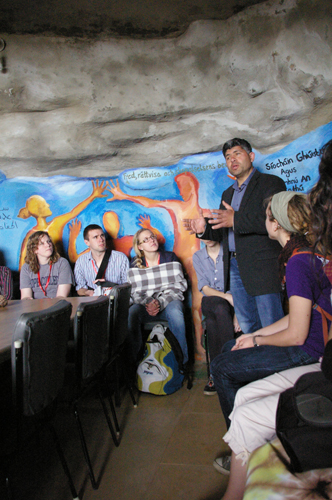 |
|
Daoud Nassar speaks at the Tent of Nations in 2012. |
Problems with Story
But this story has some problems.
First off, Israeli officials have communicated through the Ministry of Foreign Affairs that the appeal about the valley where the trees were located which Nassar and Tent of Nations said was filed on May 12, 2014 was never filed.
Echoes of Deir Istiya?
t of Nations thrives on publicity, deriving some of its income from outside donations. This controversy increases the farm’s profile substantially. While food production does apparently generate some income for Tent of Nations, its so-called peacemaking activities are also income-makers for the farm as well.
Such cynicism may appall some readers, but there may be precedent. Edwin Black alleges that Palestinians have been paid by outside activists to plant trees in a nature preserve near a West Bank village called Deir Istiya. The goal was to generate bad publicity for Israel when soldiers removed the trees from property that has been a nature preserve since the days of the Ottomans. (Judging from this link, the strategy worked.) Black tells the story in chapter eight of his 2013 book, Financing the Flames: How Tax Exempt and Public Money Fuel a Culture of Confrontation in Israel. He writes:
Israeli attempts to protect the nature reserve by removing unauthorized, newly planted trees made for plenty of bad optics and dramatic condemnation on the blogosphere. Ultimately, the conflict resulted in a series of legal actions in the Israeli court with a decision to remove the some 1,400 trees from Wadi Kana. Such a removal would be a well-photographed and highly publicized spectacle of the mighty Israeli state versus the humble Arab-planted trees.
Sounds familiar, doesn’t it?
Background and Details
The controversy erupted on May 19, 2014 when Tent of Nations published the following announcement on its Facebook page:
Today at 08.00, Israeli bulldozers came to the fertile valley of the farm where we planted fruit trees 10 years ago, and destroyed the terraces and all our trees there. More than 1500 apricot and apple trees as well as grape plants were smashed and destroyed.We informed our lawyer who is preparing the papers for appeal. Please be prepared to respond. We will need your support as you inform friends, churches and representatives when action is needed. Please wait for the moment and we will soon let you know about next steps and actions.Thank you so much for all your support and solidarity.Blessings and Salaam,Daoud
Subsequently, the organization posted another announcement thanking people for the emails and other expressions of support it had received in response to its previous announcement. This announcement reiterated Tent of Nations’ request that its supporters prepare themselves more action on behalf of the farm.
The organization also posted a statement from its lawyer accusing Israel of removing the trees one week after the farm had filed an appeal that he insists should have put a stop to the demolition. “This action is illegal even according to the draconian military laws in place,” he wrote.
The posts on Tent of Nations’ Facebook page elicited powerful emotional responses from its supporters, many of whom had visited the farm.
For example, one Tent of Nations supporter stated, “This action by the IDF shows they have no respect even for Israeli law. Quite an outrageous and unnecessarily cruel action by Israel against an innocent Palestinian farmer.”
Another supporter, a Christian from Switzerland who has volunteered with the World Council of Church’s Ecumenical Accompaniment Program in Palestine and Israel (EAPPI), an organization with a long history of attacking the Jewish state, invoked the Torah in her condemnation:
What shall we say facing such senseless violence and destruction? All there’s left to me are questions. Are these the “Jewish values”, is that what living to the Tora stands for? And where are all the people who so much cling to these values they claim to love so dearly?
Another supporter commented as follows:
Dear Daoud, I’m shocked by this news and it makes me sad. I remember my visit to Tent of Nations very well, and your speech in Driebergen last year also. There was and is so much inspiration and power in your way of living the gospel of peace and reconciliation. Destroying so many of your trees, partly sponsored by people all over the world longing for peace, feels like an attack, a brutal attempt to destroy that very same gospel. I pray for you and your family to overcome this disaster, to find the strength to fight a legal fight, and to keep the spirit alive “we refuse to be enimies.” [Sic].
The story had exactly the impact its purveyors hoped it would. People, Christians especially, got angry and started talking about those terrible Israelis who don’t live up to the requirements of the Jewish faith, destroy the gospel, and break their own laws to boot.
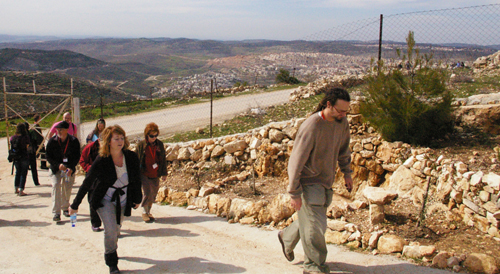 |
|
Evangelical Activist Shane Claiborne visits Tent of Nations in 2012. |
Exactly How Many Trees?
One clue about the propagandistic aspect of the Tent of Nations story is that the number of trees being destroyed keeps changing from one source to the next.
For example, Citing Al-Quds, a Palestinian newspaper, POICA, an organization that monitors Israeli activities in the West Bank, reported that the “Israeli Occupation Army (IOA) razed 8 dunums of Palestinian land and uprooted 300 olive trees in Wadi Salem area in Nahhalin village, west of Bethlehem city. During the operation, the IOA declared the area as ‘close[d] military zone.’”
The Palestinian Center for Human Rights (PCHR) reported that 500 trees, varying in age from 10 to 20 years, were removed. (On the age of the trees, the PCHR simply cannot be right because the land was not cultivated until 2007.)
The United Nations Office for the Coordination of Humanitarian Affairs (OCHA) reported that it was 600 trees that were destroyed.
The story of the uprooting of the trees, which had generated a lot of traffic on Facebook and Twitter, got more traction as a result of the previously mentioned conference call organized by Churches for Middle East Peace. During the call, CMEP’s executive director Warren Clark introduced Nassar as a Palestinian Christian who runs the Tent of Nations, an educational center that promotes non-violence.
One of the points made repeatedly on the CMEP conference call is that the Nassar family has legal title to the valley where the trees were uprooted. Speakers described the valley, which had been uncultivated prior to 2007, as part of the farm, located on a nearby hilltop that had been the family since the early 1900s.
The farm that Nassar works, Clark said, “has been the subject of protracted legal battles over the title for this land for which his ownership goes back nearly 100 years.”
After recounting the conflict Nassar has had with Israel, Clark reported that “just yesterday, members of the Israeli military bulldozed many of the trees on his farm.” (Emphasis added.)
When Nassar spoke, he described the history of his farm, stating that his family registered its claim to the land with officials from the Ottoman Empire in 1916. He also stated that the Nassars have documents from the Ottomans, the English, the Jordanians, and the Israelis establishing the family’s ownership of the farm.
Nassar then described his family’s legal battle with the Israeli government to keep the farm, which had initially tried to confiscate the land, which had fallen into disuse, in 1991. Under the law inherited from the Ottoman Empire, most farmers maintain claim to their land through continued cultivation.
After a few years of non-cultivation, the title reverts back to the state, which in this case is Israel, which controls the land in question as part of the Declaration of Principles it signed with the Palestinian Authority in the 1990s.
Because the Nassar family had documentation proving its ownership of the farm, the Israeli Supreme Court ruled in its favor and ruled that the Nassars had the right to register their land with the Israeli government.
Nassar stated that Tent of Nations received a “cultivation stop order” for the valley in question about two months previous to the conference call and that on May 12, 2014, his lawyer filed an appeal to the order.
According to Nassar and his lawyer, this appeal should stop any actions on the part of the Israeli government to enforce the order. “Just before giving a date to the court, they came on the 19th of May and they smashed the trees.”
Sojourners repeated this charge, stating that the Nassar family was “awaiting word on an appeal submitted after military orders to stop cultivation; bulldozers came before a legal response.”
Relevant magazine also repeated the accusation, citing Tent of Nation’s Facebook page. Neither Sojourners nor Relevant make any mention of contacting Israeli authorities in an effort to check out the veracity of the story they told.
The Presbyterian News Service (PNS) also repeated the allegation, stating that an appeal was filed on May 5, 2014, contrary to the date of May 12, 2012 that Nassar gave on the conference call. The PNS did not mention whether it attempted to contact Israeli officials about the allegations, suggesting that it probably did not.
In sum, it appears that three Christian news outlets – Sojourners, Relevant and the Presbyterian News Service – broadcast the story handed to them by Tent of Nations without verifying the facts and without asking the Israelis their side of the story.
Maybe the appeal got lost in the bureaucratic shuffle, but the one entity that should be able to produce the text of appeal, and proof of receipt by the Israelis, is the Tent of Nations.
This writer and one other researcher have asked Tent of Nations (via email and Twitter), to provide a copy of this complaint, but have not received any response.
The Tent of Nations remains free to produce the appeal for inspection so that outsiders can confirm (a) that it exists and (b) deals with the valley in question.
Legal Title to Valley?
The underlying question is whether or not the Tent of Nations has title to the valley where the trees were planted. Information provided by the Coordinator of Activities in the Territories (COGAT) indicates that the answer is no.
What none of the publicity surrounding the Tent of Nations story reveals is that there are two legal controversies in play.
The first controversy involves the hilltop property upon which the farm (“Tent of Nations”) itself is located. COGAT reports “On this plot buildings comprising an outpost were constructed without the required building permits. A legal proceeding is ongoing concerning this plot.”
The second controversy relates to the valley where the trees were planted. COGAT reports that in a separate proceeding before the Appeals Committee, which came to an end in 2012, the Tent of Nations failed to establish its ownership:
So what is going on? It appears that the Tent of Nations and its supporters have used the story about its struggle over the hilltop farm to describe what is happening in the valley where the trees were planted and then removed.
While these folks obsess about Israel, war rages in the rest of the Middle East. In the past three years, more than 100,000 Syrians have been killed in a brutal civil war (and that’s a low estimate). Islamist rebels in Syria have mutilated the corpses of their enemies and displayed them on wooden crosses.
The Assad Regime, which is fighting to retain power, has, according to U.S. officials, has likely used chemical weapons, specifically chlorine gas, to kill its own citizens, many of them non-combatants.
So, while undeniable atrocities take place elsewhere in the Middle East, Christian activists have, as of late, spent their time and energy broadcasting a sketchy story about evil Israelis uprooting trees in the West Bank – with the predictable references on Twitter to Deuteronomy, which condemns the removal of fruit trees during a time of war.
Will They Learn?
Clearly the events that took place outside of Bethlehem on May 19, 2014, as described in various Christian outlets, resonated with the anti-Israel crowd who responded to Nassar’s story like lion that has been thrown red meat.
It was great propaganda that allowed people to feast on their own pre-existing hostility toward the Jewish state.
Over the years, Palestinian Christians have proven somewhat adept at providing these types of stories to their supporters in the West over the years. Outsiders have given them a lot of help in broadcasting these stories.
When will these activists wean themselves from this unwholesome diet of misinformation?
When will their religious leaders, the people responsible for their spiritual formation, insist that they change their dishonest approach to peacemaking when it comes to the Arab-Israeli conflict?
When will they tell their flocks in no uncertain terms that peacemaking, when divorced from truth telling, is not peacemaking, but in fact its opposite?
CMEP’s Questionable Role
While Sojourners, Relevant, the Presbyterian News Service and other outlets deserve condemnation for failing to check out the story offered to them by Daoud Nassar, CMEP is also at fault.
This is the second time in recent memory that the Churches for Middle East Peace has, under the leadership of its current executive director, Warren Clark, assisted in the dissemination of anti-Israel propaganda.
A few months ago, CMEP hosted a conference call during which activists from Defense for Children International Palestine told another sketchy story about Israeli soldiers shooting a young Palestinian boy in cold blood. (DCI, by the way, has to the best of our knowledge, not responded publicly to CAMERA’s challenge to its story.) And in years past, under the leadership of Executive Director Corine Whitlach, the CMEP passed on stories of the Israelis undermining the Al Aqsa Mosque. Stories like this have started riots.
CMEP’s tendency to serve as a conduit for anti-Israel propaganda from Palestinian sources raises some questions.
Is the organization he leads interested in promoting the cause of peace?
(Communicated by COGAT)
The “Tent of Nations” case concerns two separate plots of land in Area C [Note: According to the Interim Accords between Israel and the Palestinian Authority, Area C is under full Israeli administrative control.]
A.  
;One plot is entirely on public land. This plot is where the trees were removed last week (see 1 and 2 below).
B. Another plot is partly on public land and partly on private land. On this plot buildings comprising an outpost were constructed without the required building permits. A legal proceeding is ongoing concerning this plot (see 3 below).
A series of aerial photographs taken between 1990 and 2013 (in 1990, 1999, 2004, 2006, 2007 and 2013) contain the following information:
a) The area marked in green in the photographs shows the plot which is the public land on which the trees were illegally planted.
b) The area tinted blue in the 2013 photo shows all the surrounding public land.
c) Trees were removed only from public land while the trees on private land were untouched.
d) The series of photos show that over the years, until 2006, the area was completely uncultivated.
e) Beginning in 2006, terraces were constructed. Starting in 2007 (a process that continued through 2013), the trees were planted.
2) The decision of the Appeals Committee concerning the plot on which trees were planted:
The December 2012 decision states clearly that the encroachers did not succeed in proving their claims of ownership in the Appeals Committee and therefore their petition was rejected, making it possible to remove the trees. As noted, this plot is designated public land.
3) The Supreme Court’s response concerning the outpost:
a) The petition to the Supreme Court, sitting as the High Court of Justice, refers to the 2006 case of the “Tent of Nations” outpost buildings. [The petition makes no reference to the matter of the trees.]
b) As stated in the 2012 High Court decision, it was decided to cancel the petition with the consent of both parties. This was to allow the appellant time to legalize his construction.
c) Since the legal process has not been completed, Israel is not evacuating the outpost buildings.
